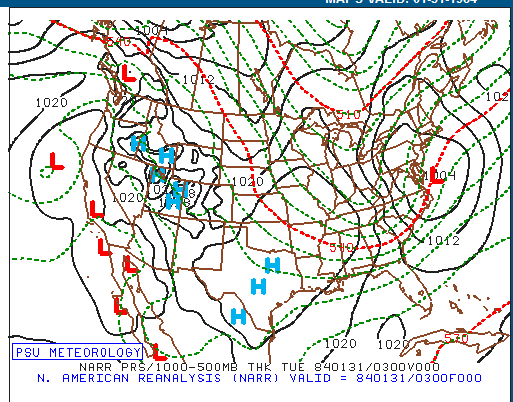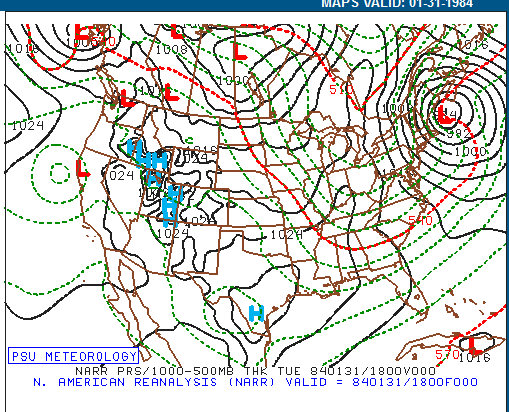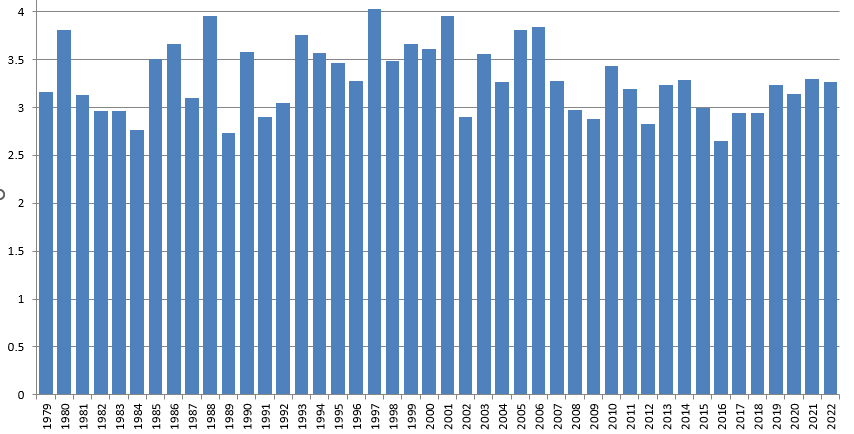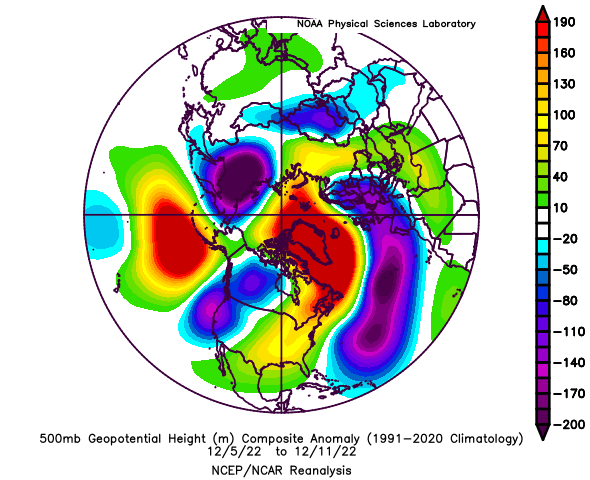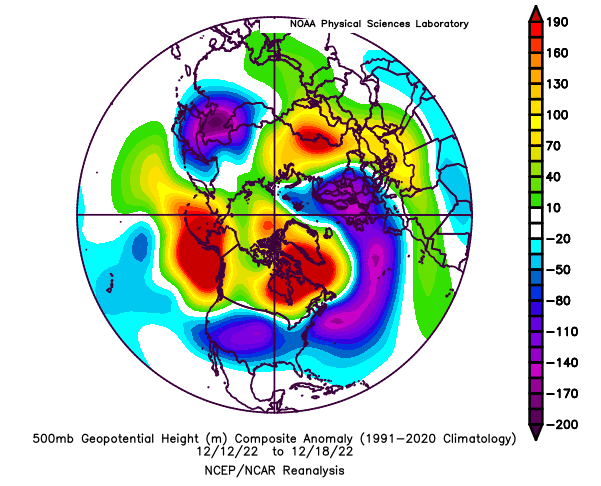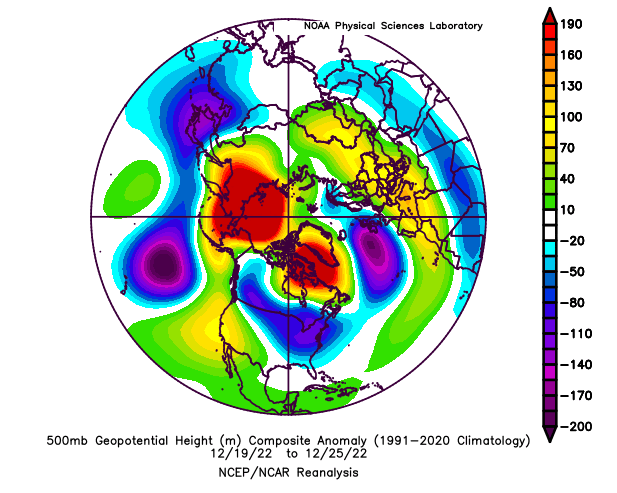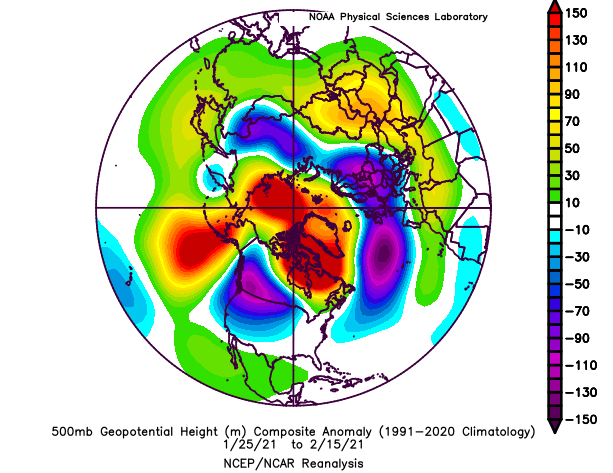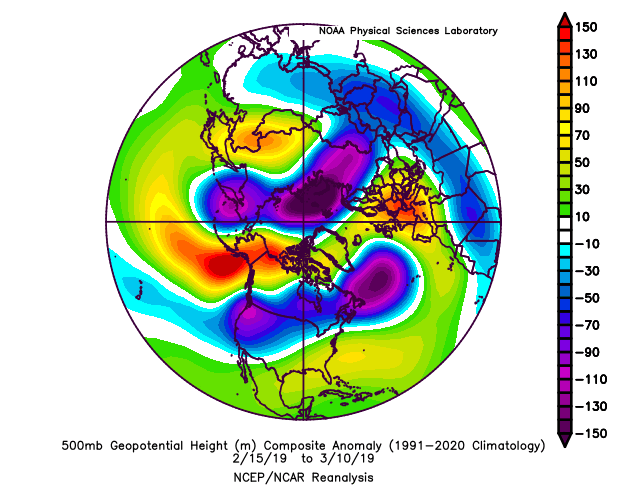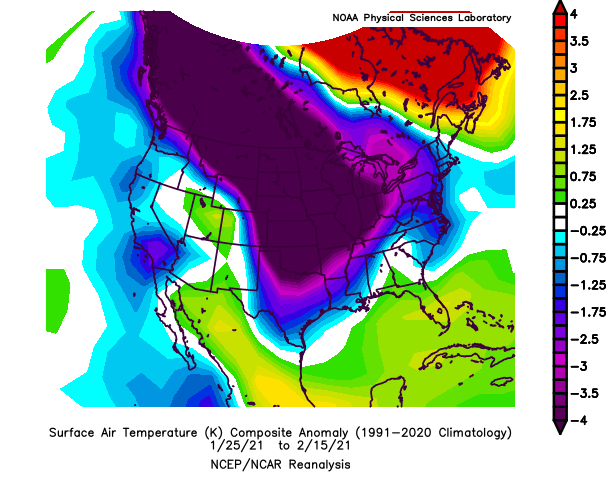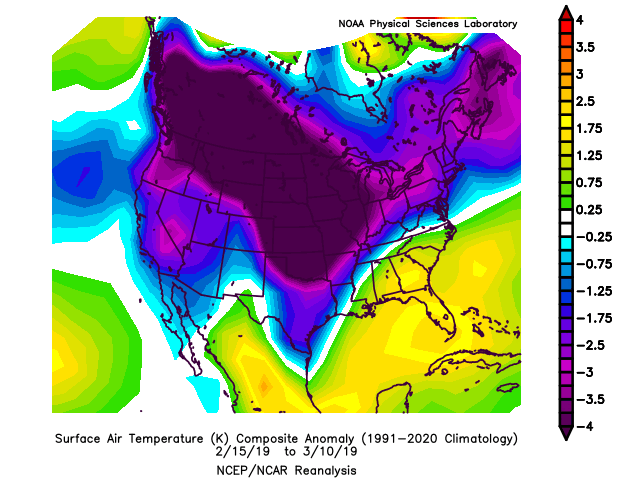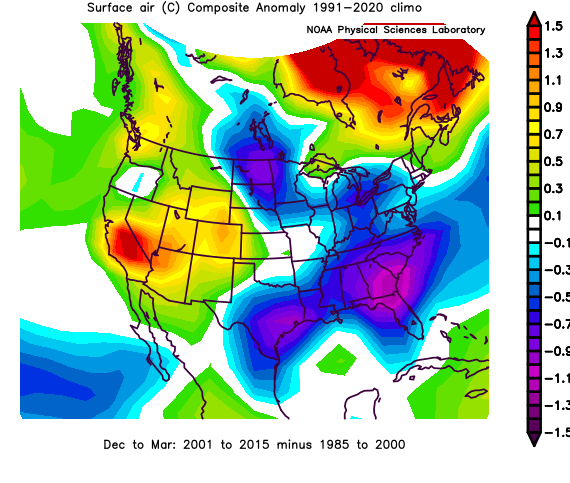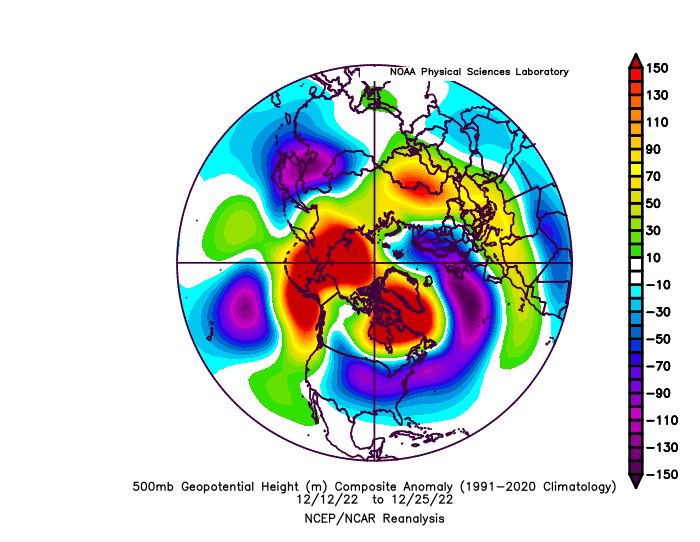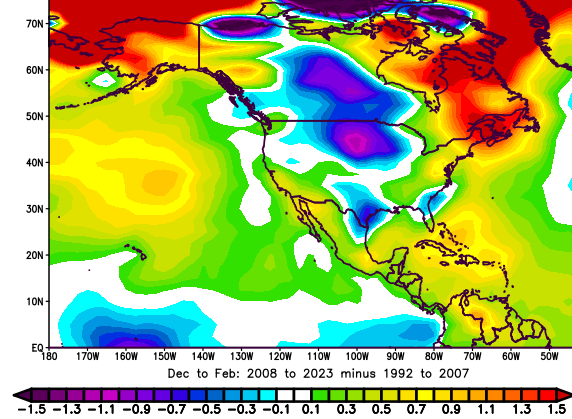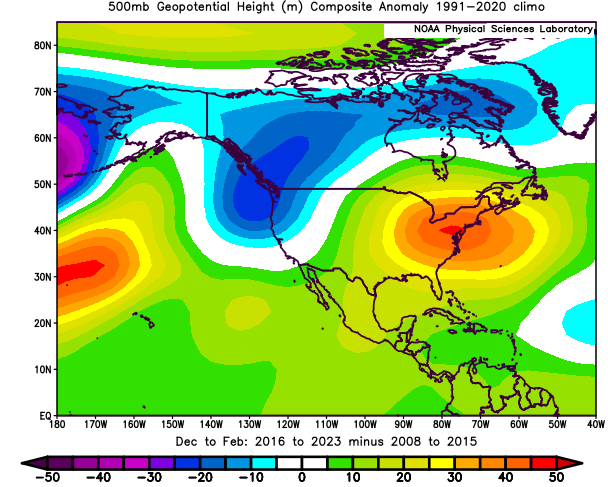-
Posts
90,931 -
Joined
-
Last visited
Content Type
Profiles
Blogs
Forums
American Weather
Media Demo
Store
Gallery
Everything posted by ORH_wxman
-
'01-'02 and '11-'12 are terrible ENSO analogues. '01-'02 at least was coming off a 3-year La Nina like this year was, but it was a neutral ENSO year whereas we're gonna in a potent El Nino this winter. That doesn't mean the sensible wx can't be similar, but it would probably be for different reasons than those two winters.
-
Yeah and '77-'78 is a brutally cold analog that is unlikely to repeat on temps...though '14-'15 was basically the same DJFM temps as '77-'78...but that was also an extreme season. If we somehow return to a +PNA pattern that coincides with some arctic blocking, then we're gonna get cold for a time. We just haven't really seen that type of pattern in any type of sustained fashion since 2014-15 save maybe maybe Dec 2017/early Jan 2018 and Jan 2022....we had some shorter stints in Dec 2020 and 2nd half of Jan 2019 that helped cause the record breaking cold outbreak that month, but these have been the exception rather than the overwhelmingly -PNA rule with lower arctic blocking.
-
Yes, I find the evidence that MEI won't get close to super Nino status quite compelling. Still a small sample size, so I wouldn't rule it out entirely, but it does seem like it's going to be a moderate to maybe strong MEI at the peak rather than super. Weaker MEI could manifest in the pattern any number of ways....hopefully it's to our advantage. A somewhat stronger northern stream influence with still a decent STJ would probably be a best case scenario (ala a winter like '77-78)
-
Just make sure the setups are exactly the opposite of last year....lol. Didn't even have a weak high over Nova Scotia....instead they were chilling out over the Andrea Gale
-
-
Feb 28-Mar 1, 2005....lol. I hated that one...prob some convective feedback robbing us and that was probably possible because of weakish fronto dynamics. 12/29-30/2012 was one too....kind of fast moving, no great high. But it was a mundane warning event. Low went sub-984 as it crossed BM to east of CHH. 1/31/84 is a good one too...not quite 984mb, but it went sub-990mb. Mundane event.
-
After several solid gains on the weekend, it is now safe to call the NSIDC area minimum....the minimum was set back on 9/12 at 2.63 million sq km. This ranks as the 4th lowest minimum behind 2012, 2016, and 2020. This is 470k below my prediction of 3.1 million sq km and outside my confidence intervals of + or - 300k. You can ironically see in the post above that I said if we matched the record melt after July 1st that occurred in 2016, we'd end up with a min at 2.65 million sqkm....well, we not only matched it, but slightly exceeded it. 2023 is the new record high ice loss after July 1st which blew up my prediction. This is my first real miss since 2016 when we had a similar post-July 1st melt. The odds of a huge post-July 1st melt hadn't really changed much over time based on the empirical data prior to this season, but I might incorporate a very slight handicap in that direction during next year's prediction....though even a slight handicap would not have saved this year's prediction. That is just the nature of trying to use 300k error bars when your standard deviation on this is 375k. So I'd expect to miss about 30-35% of the time using pure statistics....but I usually incorporate medium range weather patterns and also the distribution of the ice into the predictions as well which historically has helped make the misses less frequent than the purely statistical 30-35%. The extent minimum looks like it was around 4.25 million sq km which is barely still inside my confidence interval on extent. A very warm blocky pattern on the North American side was the main culprit in the strong post-July 1st melt. Typically, this area from the CAA to the Beaufort side of the CAB struggles to melt down if there isn't a lot of preconditioning in May/June, but this year we able to overcome mediocre preconditioning with the very strong blocking pattern that set up in July and August.
-
Are you talking about a 984 low on the BM where it was too warm for snow? That happened almost exactly in the 2/24/98 storm. Though you asked about early February and that is late February. I don't think there's been too many, 2/10/10 was basically a sub-980mb sitting on the BM but that brutal northern edge ate into our precip and we got that massive bust. It was cold enough, but the truly heavy precip never made it to us.
-
Yeah I'd sign the dotted line right now if the MEI came in between 0.5-1.0 for the winter. Honestly, the weenie scenario is the MEI keeps lagging in that 0.5 range into December so we get less El Nino influence that month (thus helping the chances for colder/snowier solutions) and then it climbs more for Jan/Feb so we can get the great second half that often occurs with +ENSO. But my guess is still a mild December for now...I think the MEI will rise a decent amount over the next 2 months.
-
Since I was comparing two sets of years against the same anomaly, it wouldn’t change anything on that plot I posted if we changed the baseline from 1991-2020 to another 30 year set. But if we compared one of the sets of years to a single baseline, then yes, it would change depending on the baseline we use. It is easier to get a below normal winter using 1991-2020 normals than using 1961-1990 normals since the latter is a much colder climo baseline.
-
I'd also say it is probably worthwhile to take a look at the evolution of the Dec 2022 block....as noted, you see the initial super deep PNA trough out west producing a huge ridge response in the east in the 7 day period leading up to the maturity of the block. Then as the block is starting to mature, we see a pretty typical height response underneath it....albeit, still some very deep height anomalies over the SW US. Then finally, the fully mature and beginning of the decay of the block in the 7 day period leading into Christmas....you'll note the height response still looks very good to the south, but that core of best anomalies is a bit too far west....did the block cause that or was it the very deep height anomalies in the SW US that led to this? OR maybe it was some of both? Hard to say for sure, but it was not a completely normal evolution given the extreme initial troughing out west.
-
We actually had a discussion about 6-8 years ago on here (I'll have to see if I can find the exact thread) about how the deeper interior had been seeing declining snowfall (particularly bigger storms) while closer to the coast had seen increasing snowfall and the culprit or explanation given at the time by many in the thread was because of the predominantly -AO/-NAO patterns we had seen in recent winters.....due to? You guessed it, lower sea ice/AGW. Now we're seeing the opposite argument....deeper interior is cleaning up because of AGW-induced blocks further south. This is what causes so much skepticism in the pattern-attribution studies....it sounds a lot more like "Flavor of the month" because they don't maintain their dominant force for more than a few winters. I have no doubt that all else being equal, there is some attribution going on, but the problem is things don't remain equal for very long. Natural variability is still a very strong force which is why you can see a decade (or more) of colder winters over a large region than the previous decade despite underlying warming trends. If you adjusted your winter forecast temps much warmer in the 2000s/early 2010s because of the big warming trend we saw from 1980-2000, you would have looked like an idiot and been consistently too warm. Is it because climate change didn't exist? Nope...it was because you probably placed too much weight on it and not enough on other factors that easily overwhelm it in a given season.
-
-
I think my main beef with your comparisons is assuming the Dec 2022 -NAO/-PNA pattern is the new norm or at least likely to be the dominant type of -NAO/-PNA pattern going forward....why are we ignoring the cold -PNA/-NAO pattern from late Jan to mid Feb 2021? Or what about the cold -NAO/-PNA pattern from mid Feb to early Mar 2019? Dec 2022 looks like more an outlier to me than a new paradigm.
-
Here is 2001-2015 winter temps compared to the previous 15 years....climate change was happening during all of this, yet much of the central and eastern US was colder in the mean. We wouldn't claim it is due to global cooling...we would claim it is due to natural variation on top of the underlying warming trend....it happened to overwhelm it during that period relative to the previous 15 years. So yeah, it's not unreasonable at all to say that some of the warming the northeast has seen since 2015 is due to natural variation putting us in a more unfavorable pattern. I also reject that the pattern becomes more permanent. But we'll see. Maybe this is the one that actually does and all the others that failed to stay consistent (warm blobs, -AO due to sea ice, etc) were just flawed research.
-
Area has been pretty flat over the last few days....up a little bit, but not quite enough yet to call the minimum with high confidence. We are currently at 2.72 million sq km which is 90k above the min back on 9/12. If we tick up to 2.8 million sq km in the next couple days, then I think it will be safe to call the min.
-

Wake Me Up When September Ends..Obs/Diso
ORH_wxman replied to 40/70 Benchmark's topic in New England
Looks like really nice weather next week…great fall airmass. -
PDO stayed negative in '72-'73 but not strongly so.
-
Yeah in the monthly mean it wasn’t as great as those previous examples but during the core period of favorability (those two weeks leading into Xmas), we did have a good height response below the block but we got unlucky with that phase out west prior to the 12/22-23 storm
-
It’s gonna need to rise very quickly like ‘82 did to atmospherically behave like a super Nino but we’re already lagging behind ‘82…it could still get there if it did it like a month or two delayed but not sure if that is a long shot or not. Either way, this is going to be an instructional example.
-
When we discuss attribution, we’re really discussing “net impact”…CC changes the weather so if we’re being extremely literal as in “butterfly theory”, then of course CC causes everything….it might have caused today to be a partly sunny day in Florida instead of a category 5 hurricane. That’s why we discuss net impacts. We know deep PNA troughs have dug into Baja California before so we can see how the patterns looked when that happened in the past and the compare it to a deep Baja CA trough in Dec 2022. Frankly, any dismissal of skepticism on attribution studies as someone denying CC at all is just as bad as someone actually claiming there is no effect. It’s usually a tactic to try and shut down discussion rather than engage using empirical evidence. Both are not scientific inquiry…and more like dogma.
-
I agree with the loaded dice comment....I think where you and I probably fundamentally disagree the most is how much weight we are putting on these shorter term patterns. I view most of them as natural variation that exist on top of an underlying warming trend which CC enhances or mutes....which means that when we get a canonical warm pattern, its REALLY warm and when we get a canonical cold pattern, it's not as cold as the previous ones. It's why I refer back to earlier proclamations of regime shifts that didn't stand up over time. The "new hot thing" back in the 2009-2014 years was the "warm arctic, cold continents" pattern in winter that CC had driven because of low sea ice. Several peer-reviewed papers were published on this topic. There was legit discussion about how these patterns might be paradoxically more common because of CC.....then it all shifted away from that theory quite quickly in the following 8-9 years. Prior to that, we had peer reviewed literature talking about a semi-permanent +NAO/AO based on the big increase in those patterns in the 1980s/1990s....and then the 2000s of course shifted the other way. Now maybe CC has caused a near-permanent SE ridge which means 2016-2023 is the new normal....again, I would bet against that, but maybe this time it will stand the test of time unlike the previous shifts. I do think it's good to look at the effects of SST warming in regional spots....but at the same time, warming is not evenly distributed on a temporal/spacial scale and relative changes will cause certain areas to cool or warm differently than perhaps they did in the previous decade or two. Prior to the mid-2000s, the fastest warming region in the CONUS was the upper plains/Rockies....now they are the slowest warming region in the CONUS while New England and SE Canada are the fastest.
-
I think it's good to try and discuss the impacts....so I don't mind these discussions. I've seen a lot of over-attribution in the last 15 years to specific patterns that then change and we stop hearing about them for a while and we move onto the next attribution study. CC is related to all this in some form, but untangling it from natural variation is hard when it comes to specific pattern regimes....and this is doubly true when we are discussing 8 year chunks. That's a terribly small sample to make a lot of longer term conclusions from. We know what the longer term trend is, but trying to "Adjust" our projections of temperature changes or pattern changes based on very short timescales has it's major drawbacks. I know the longterm trend for ORH temperatures in DJFM is 0.4F per decade....but if we use only the trend since 2008, then it's at 2F (!!) per decade. So that's the end of the debate, right? We can assume it's going to be 2F per decade over the next 20 years or so? Nope, if we did the exact same exercise from 1985-2000, the trend was also 2F per decade....but then the next 15 years was actually a negative trend of -1.1F per decade. In the mean, the positive trends will outweigh the negative trends, but from an empirical standpoint, there is no evidence that they just continue unabated. I'm certainly open to some "tipping point" that has permanently given us a Philadelphia winter climate, but I would obviously treat such claims with extreme skepticism and they should be until evidence is way stronger.
-
Actually not a terrible match over North America, though the PNA trough is deeper in 2022-23 and the NAO block is in a much better spot in '55-56 for northeast snow (west based near Hudson Bay and Baffin).
-
When I look at the most recent 8 winters and compared them directly to the previous 8, I see a larger scale regime shift in the polar domain and the PNA region....that's by far the primary cause of warmth to me in the northeast and not underlying CC change. The underlying CC trend makes our patterns warmer than they used to be all else equal, but it is not the primary driver of this type of shift we see where heights are lower in the NAO region and PNA region and higher over the east coast. Now, maybe you are arguing that CC caused the PNA trough to dip so far south that Pasadena and many other areas that hardly ever get cold enough were getting snow? Maybe....that's a bold claim.... but I haven't seen compelling evidence on that front. I buy that the downstream ridging is warmer in a warmer world, but that still doesn't explain the larger regime shift which we have seen historically. Are you arguing that this new paradigm in the last 8 years is a permanent feature? I'd bet against that for sure. It doesn't mean we will go back to averaging 2008-2015 temps, but that same pattern would still be significantly colder than the 2016-2023 pattern even with underlying CC warming.





